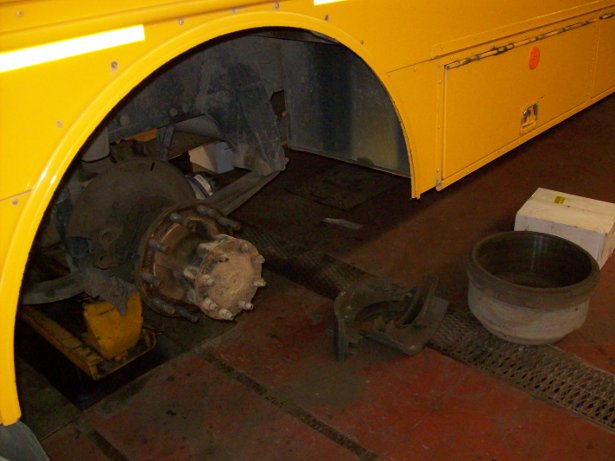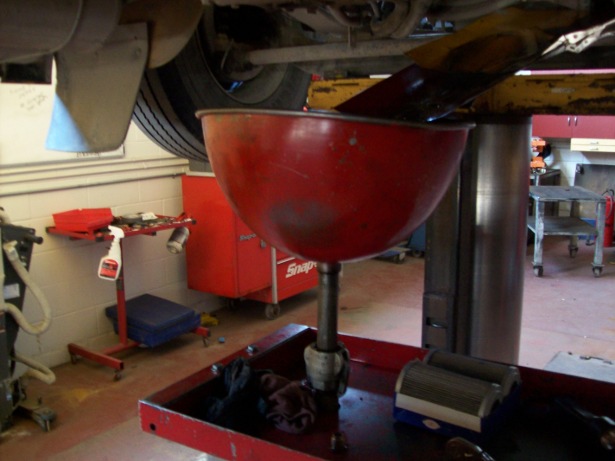With school out we have the pick of the fleet for our maintenance and repair schedule. There’s just the shop crew working through July and August. Maintenance is our main focus year round but also major repairs have to be attended to. Summer is the busiest time for us because it’s the most convenient time to get the majority of our work completed.

The White Fleet Adds To The Workload
The white fleet also needs attention as this is their busy time as well with schools shut down. There’s carpenters, electricians, plumbers, computer techs, grounds crew who all need transportation so we look after their wheels as well.
Since our fleet has spare buses we utilize them throughout the year to get repairs and maintenance done in a timely manner without trying to catch up all the time. We used to wait until the Summer to do all the major maintenance and repairs but there wasn’t enough days in the week and 2 months roll by extremely fast.

Test Running A Major Servicing Program
One test we ran with our maintenance program was the major servicing (valve sets, air dryers etc) which we have been doing during the annual motor vehicle inspection. Since the MVI co-ordinated easily with our maintenance it was an easy way to keep track of the schedule. It meant another day or two down time but there was no problems making it work.
To stay away from trouble and possible break downs we stick to a time frame for component changes regardless of their condition. Two such items are the batteries and spring brake pots which we replace every 5 years. Wear and tear plus age are factors effecting the longevity of these two items and this system has worked out well.

Led Lighting Has Proven Effective
During the 1990s we used to service the incandescent lights on the entire fleet by taking them apart, washing out the lens and cleaning corrosion out of the contacts. Dielectric grease would finish off the job. The reason we had to go to all this trouble is the D.O.T Inspector would write us up for poor illumination during inspection because of the inadequate sealing ability of the light lenses.
Since introducing LED lights into our fleet that part of our maintenance program has totally stopped. LED lights are sealed and made much better lately with fewer diodes and less failure rates. They come with a 5 year warranty and we are allowed (in our district) a 30% burn out rate of the diodes. The initial cost is an eye opener but once you realize the benefits the cost is nothing. LED lighting on a new bus runs around $1800.00 which is nothing when you look at the overall cost of a school bus.
The Value Of Everybody Contributing Their Knowldege
In a nutshell that’s a typical Summer maintenance program in a school bus garage. There’s always room for improvement and changes to make the program easier is always churning around our methodical minds. Monthly shop meetings are invaluable kicking around new innovative ideas allowing everybody to contribute their decades of knowledge and experience. (and…. enjoy some donut holes and coffee on me)






